My first post here! I'm that most dangerous of EE-wannabes—a software guy with theoretical knowledge:
V=IR, and transistors come in two flavours: "NPN" (1=On) and "PNP" (1=Off)
Introduction
@stevenvh almost answered my question in this beautiful answer, except that I want to gang up four 4x7 segent displays - and use two demultiplexers rather than discrete selection pins. I've repeated his diagram here:
My basic values
- 5V supply
- Common cathode displays
- Blue LEDs with 3.0V drop @ 20mA
My problem
My problem is that I can't get hold of 74LS238 (3-to-8 demultiplexers, decodes High), I can only get 74LS138 (3-to-8 demultiplexers, decodes Low). That is, all outputs except the decoded one are High.
That means that I need to use PNP transistors rather than NPN in his diagram, and put them in "upside down" (collector to ground).
My questions
- Is that all I need to change?
- Which PNP transistor would you recommend?
